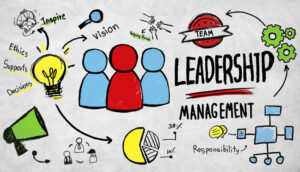Megan Jones, Editor at Call Centre Helper, interviewed contact centre expert Alex Mead about the behaviours and priorities that set the very best customer service leaders apart from the rest.
Reflecting on more than 25 years of global CX experience, here’s what he said creative customer service leaders do differently:
1. They Look Beyond the Contact Centre to Resolve Service Issues
It can be really hard to get to the bottom of customer service issues when you are just relying on the information inside the contact centre.
That’s why, before coming up with a solution, creative customer service leaders spend time outside the contact centre – with colleagues in retail stores and delivery vans (for example) to see what it’s like for them to deal with their part of the customer journey.
Then they make sure they capture this insight, map out the reality of the customer experience, and think about what great would look like.
Speaking to Delivery Drivers Was a ‘Game-Changer’
I worked for a logistics company at a time when we were failing to deliver around 75,000 parcels a day.
Despite this, we were still telling customers that “we’d tried to deliver”. (This is called ‘false carding’ and still happens in the UK a lot.)
To help resolve this issue, I went out with the drivers to gain more understanding of their experience. It was very eye-opening as I quickly discovered two key reasons behind this issue:
- The drivers weren’t getting enough information from the retailer about the delivery address (for example, entry codes for blocks of flats),
- Their delivery schedules didn’t have enough bandwidth to make all their deliveries, so they were being forced to make judgement calls such as “If I do that job over there 7 miles away, I’m going to miss the guaranteed drop times for these next eight jobs, so I’m going to press this button to say I tried to deliver and carry on with my rounds”.
So, whilst some in the contact centre may have passed judgement about them “just being lazy”, it turned out that the process was broken, and the behaviour was being driven by reasons that we needed to fix as a business.
We also had some delivery drivers spend time in our Contact Centres, whilst I sent out several agents to spend the day with drivers. To say the mutual respect and understanding of each other’s roles went up is a massive understatement.
2. They Invest Time in Understanding More Than One Type of Customer and the Right Outcome for Them in Various Scenarios
When thinking about your customer journey, it’s not enough to just walk in the shoes of one type of customer. That’s why creative customer service leaders consider five customer types and understand the right outcome for them in various scenarios.
Why is this so important? Quite simply, what’s right for one customer isn’t right for another.
Consider an airline with many customers from different walks of life – from business men, to mothers with small children, to families travelling for weddings or similar important life events.
By walking every mile in the customer’s shoes, it’s possible to take the lead on making sure everything is as frictionless as possible.
Taking the time to consider these different customer types and map out their emotional needs can better prepare teams with solutions that make a difference.
This approach can support agents in thinking about the human element and what “great” looks like for that type of customer when (for example) a flight is delayed or cancelled.
An extension of this exercise is having a firm understanding of what it’s like for these customers at every stage of the customer journey, across every channel.
By walking every mile in the customer’s shoes, it’s possible to take the lead on making sure everything is as frictionless as possible.
Watch this video for more on customer personas: Using Personas in Customer Journey Mapping
3. They Stop Measuring Agents on Things They Can’t Control
Creative customer service leaders measure agents on things that are within their control to motivate and empower them to do a great job.
About 10 years ago, I joined a large bank and quickly discovered that everyone selling mortgages had their performance measured on mortgage value AND when the mortgage completed.
This meant that it all came down to the luck of which calls came through to them and the outcome of the property transaction… When their actual job, in their control, was to get the customer to complete an application.
So, I changed the way they did things, so every single mortgage application was worth one, and they’d get the bonus when the mortgage application is approved by the underwriter. And what happened?
The mortgage sales went up, as this change stopped agents from trying to rush customers off the phone and hold out for higher-value mortgages, because overnight every customer was of equal value. That same year they even won an award for best customer experience.
Obsessing over metrics can distract leaders from driving good behaviours in agents. For more on this, read our article: Are Your Team Leaders Too Busy Chasing Metrics?
4. They Strive for ‘Resolved’ Rather Than ‘Handled’ Contacts
Unfortunately, a lot of customer experience leaders measure the success of their teams on the volume of ‘handled’ contacts instead of ‘resolved’ issues.
Creative customer service leaders measure their agents on whether they successfully resolved the issues, driving a culture of focusing on fixing customers’ issues
This can fundamentally drive the wrong behaviours, for example, celebrating 90% of calls answered in 30 seconds having failed to fully service 50% of those customers. It’s a false economy!
This is where the most creative customer service leaders measure their agents on whether they successfully resolved the issues, driving a culture of focusing on fixing customers’ issues (and reducing the need for a callback).
One way to achieve this is by chucking scripts away and allowing customer service teams to be human beings rather than scripted robots, as well as allowing them to take true ownership of an issue and genuinely be able to say “leave it with me and I’ll call you back tomorrow with a solution.”
This also avoids the awkward situation of an agent simply saying “sorry, I can’t help you, I have no information” and within 5 minutes that same customer receiving an automated CSAT survey asking how happy they were with that call.
To find out how to measure first contact resolution (FCR), watch this video next: Why FCR Matters and How to Measure It
5. They Empower Agents to Go the Extra Mile

Creative customer service leaders make sure that all their agents have a ‘special something’ up their sleeve to empower them to go the extra mile – if or when the prospect arises.
For example, when I worked as a leader for a logistics company, we had a situation where a mother complained that the bike she’d ordered for her daughter’s birthday had gone missing.
We took the opportunity to go the extra mile to fix the problem, by talking to the mother to find out the make and model of the bike, going to the nearest toy shop and buying a replacement, so we could go back to her and say, “Don’t worry, we will get you a bike today and you don’t have to worry about the one that’s lost in our system of 500,000 parcels.”
So… What kind of leader are you?
Contributed by: Alex Mead, Global CX and Contact Centre Expert
If you are looking for ways to develop your contact centre leadership, read these articles next:
- How to Coach Resilient Contact Centre Team Leaders
- 9 Traits of High-Performing Team Leaders
- 9 Ways to Create a Thriving Contact Centre Culture
Author: Megan Jones
Published On: 28th Feb 2024 - Last modified: 21st Mar 2024
Read more about - Call Centre Management, Alex Mead, CX, Editor's Picks, Leadership, Team Management, Top Story








































